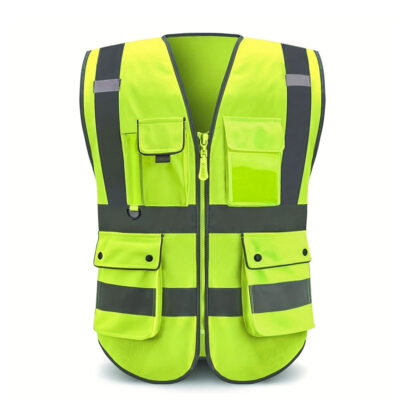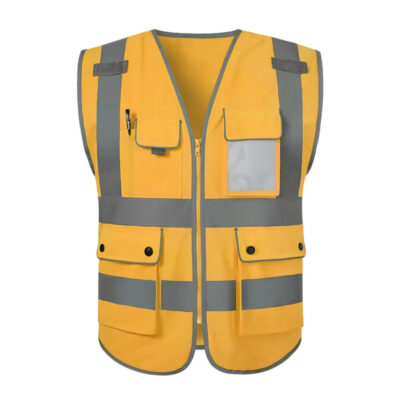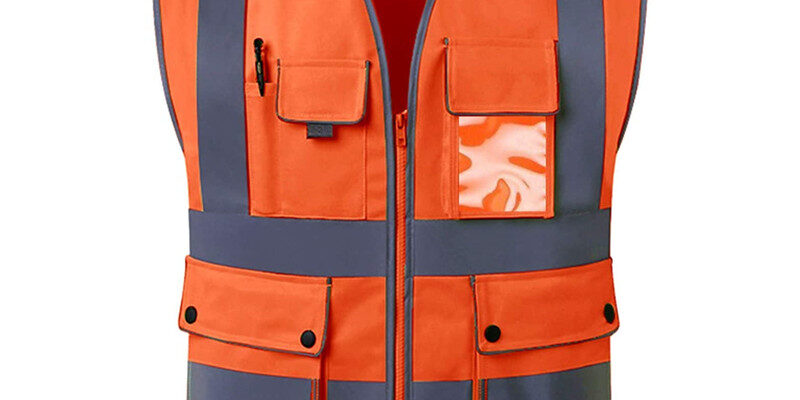Reflective Jacket Vests vs. Full Jackets: Which Is Better for Your Workforce?
Introduction: Visibility and Safety at the Core
High-visibility clothing is essential in construction sites, logistics hubs, oil & gas facilities, and roadside operations. Reflective gear saves lives by making workers visible in low-light or high-risk environments. But procurement managers often face a key question: should we choose reflective vests or full jackets for our workforce?
The answer depends on factors such as climate, job function, and cost efficiency. Let’s compare the two options to help B2B buyers make informed sourcing decisions.
🦺 Reflective Vests: Lightweight and Versatile
Reflective vests are sleeveless garments designed to be worn over regular workwear or uniforms.
Advantages of Reflective Vests:
-
🌬️ Breathability: Lightweight design keeps workers cool in warm conditions.
-
👌 Layering Flexibility: Can be worn over T-shirts, polos, or jackets.
-
💵 Cost-Effective: Lower price point makes them ideal for large-scale distribution.
-
🔄 Easy Storage: Compact and simple to replace if damaged.
Challenges of Reflective Vests:
-
🚫 Limited insulation—unsuitable for cold environments.
-
🚫 Reduced protection for arms and torso.
Reflective vests are commonly used in warehousing, delivery services, and logistics, where visibility is essential but climate control is already provided indoors or by other layers.
🧥 Full Reflective Jackets: All-in-One Protection
Reflective jackets combine visibility with full-body upper coverage, making them ideal for outdoor or harsh-weather environments.
Advantages of Reflective Jackets:
-
❄️ Insulation: Protects against cold and wind.
-
🌧️ Weather Resistance: Many include waterproof shells and seam-sealed finishes.
-
🛡️ Enhanced Protection: Provides more surface area for reflective tape placement.
-
👔 Professional Appearance: Projects a more uniform and structured look.
Challenges of Reflective Jackets:
-
💰 Higher cost compared to vests.
-
🔥 May feel too warm in hot climates.
Reflective jackets are best suited for construction, utilities, and oil & gas industries, where workers are exposed to outdoor conditions for extended hours.
📊 Side-by-Side Comparison
| Feature | Reflective Vests | Full Reflective Jackets |
|---|---|---|
| Insulation & Warmth | ⭐ Low | ⭐⭐⭐⭐ High |
| Weather Protection | ⭐ Low | ⭐⭐⭐⭐ Waterproof/Windproof |
| Cost Efficiency | ⭐⭐⭐⭐⭐ Very Affordable | ⭐⭐ Higher Investment |
| Flexibility & Layering | ⭐⭐⭐⭐ Easy to layer | ⭐⭐⭐ Moderate |
| Best Suited Industries | Logistics, Warehousing | Construction, Utilities, Oil & Gas |
🔑 Strategic Considerations for Procurement Teams
When deciding between vests and jackets, buyers should weigh:
-
🌡️ Climate Conditions: Hot warehouses → vests; cold outdoor sites → jackets.
-
👷 Job Functions: Delivery drivers and indoor staff benefit from vests, while field engineers need jackets.
-
💰 Budget and ROI: Vests offer low-cost visibility, jackets deliver long-term protection.
-
🎨 Customization Needs: Both garments can be branded with logos and color schemes for corporate identity.
🌐 Partnering with the Right Suppliers
The choice is not always either/or—many companies build dual programs, providing vests for summer and jackets for winter. Working with trusted Workwear Manufacturers ensures seamless sourcing across multiple categories.
For cost-effective, high-visibility layering, our dedicated Reflective Vest Manufacturers supply lightweight yet compliant vests that align with bulk procurement needs.
Conclusion: A Balanced Workwear Strategy
Both reflective vests and jackets play important roles in industrial safety. The decision should be guided by environmental conditions, workforce needs, and cost structures.
🔎 For warm or indoor workplaces, reflective vests provide affordability and flexibility.
🔎 For outdoor, cold, or high-risk environments, reflective jackets deliver full protection.
By building a tailored program that includes both options, procurement managers can ensure maximum worker safety, comfort, and compliance.





















